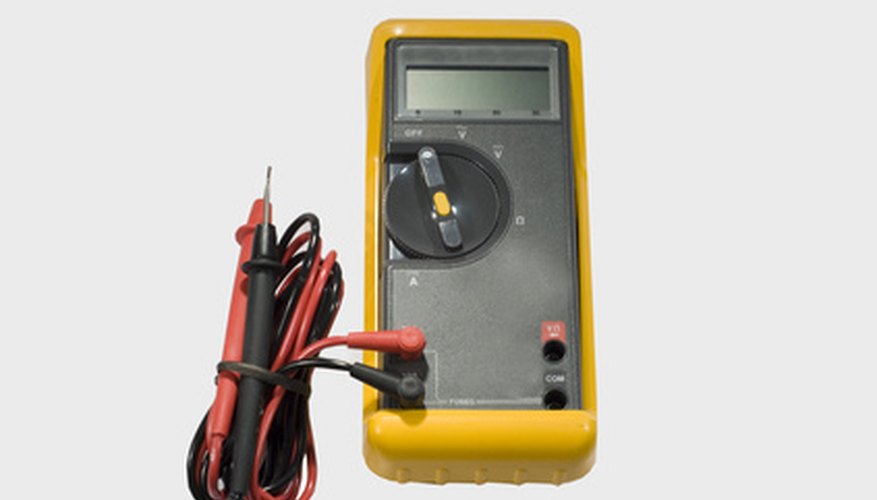Whenever you measure electrical equipment, you'll need a meter which can measure volts, amps, and ohms. Most meters can do all three and have voltmeter, ohmmeter and ammeter features. However, there are two distinct kinds of meters: analogue and digital. Although there are advantages and disadvantages to both kinds of meters, digital meters are usually better than analogue.
Advantage: Accuracy
Unlike analogue meters, digital meters do not require you to figure out exactly what reading the needle is sitting on in order to get the voltage, amp or ohm reading. Instead, a digital meter takes a precise, computer-generated reading and displays it on a screen. Though computers are not infallible, the processors on digital meters are very dependable and do not require you to make the calculations. Also, the accuracy of an analogue meter's reading largely depends on the reader and that reader's competency at reading analogue meters. A digital meter does not depend on its user in such a way.
- Unlike analogue meters, digital meters do not require you to figure out exactly what reading the needle is sitting on in order to get the voltage, amp or ohm reading.
Disadvantage: Measuring Fluctuations
Analogue meters have the advantage that, when fluctuating readings exist, the analogue meter is able to measure these fluctuations. The analogue meter's needle will swing from one position to another constantly in order to represent the fluctuation. When a fluctuation exists, a digital meter is unable to represent the fluctuation; instead it either records an error or calculates one reading. Despite this, the only kind of fluctuations an analogue meter can measure are low-frequency fluctuations, which doesn't leave digital meters at much of a disadvantage.
- Analogue meters have the advantage that, when fluctuating readings exist, the analogue meter is able to measure these fluctuations.
Advantage: User-Friendly
The fact that a digital meter performs the calculation and displays the reading, rather than relying on a reader's ability to calculate the correct reading, makes digital meters user-friendly. All a user has to do, in order to get an accurate reading, is place the digital meter's needles in the place where the reading is to be taken, wait for the digital meter to display the reading, and write down or otherwise note the reading. User-friendliness makes a digital meter more usable, and less time consuming, both great advantages over analogue meters.
